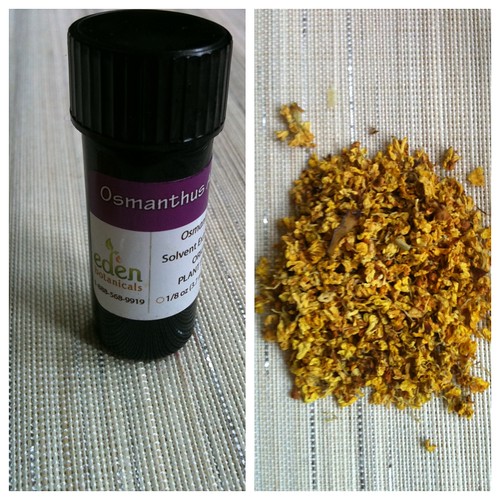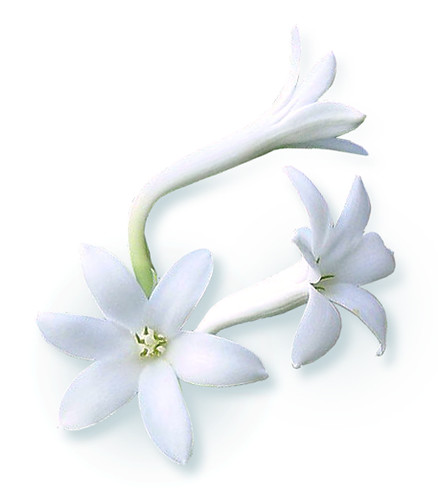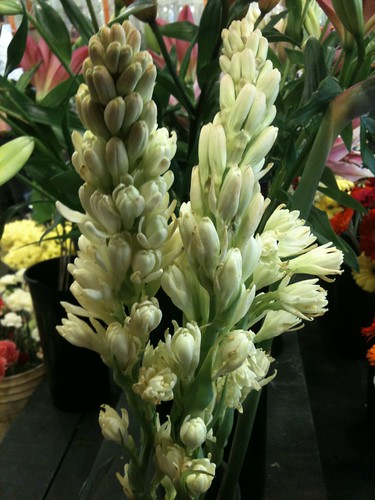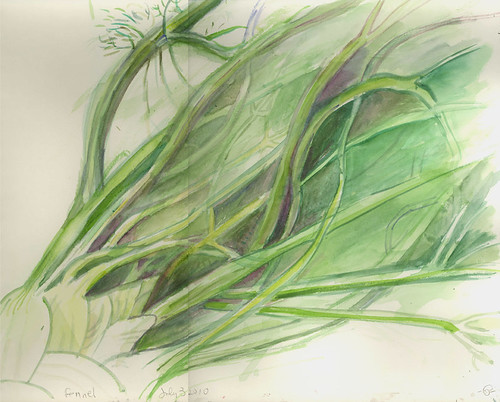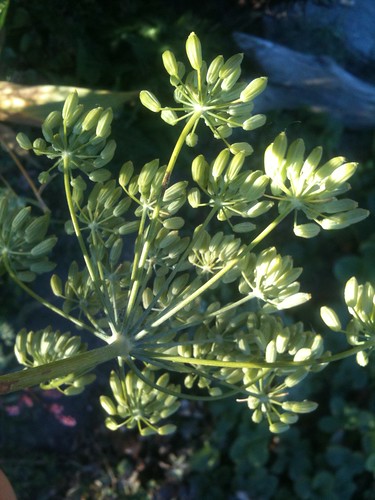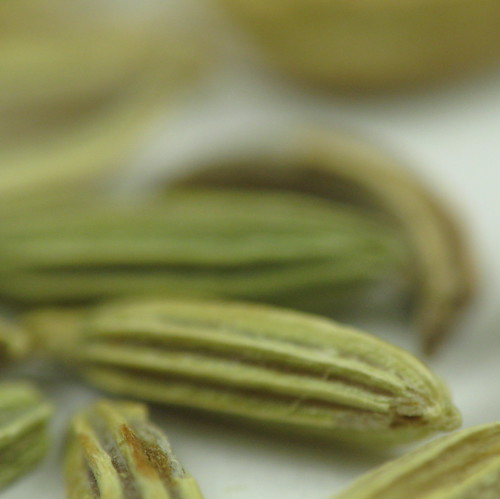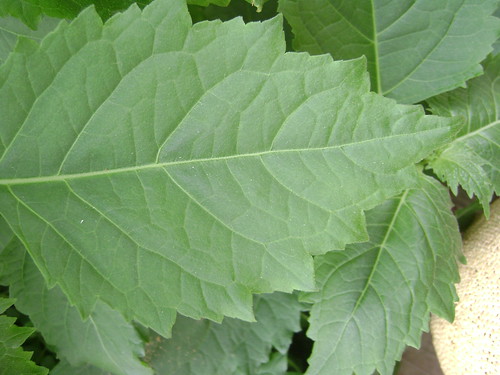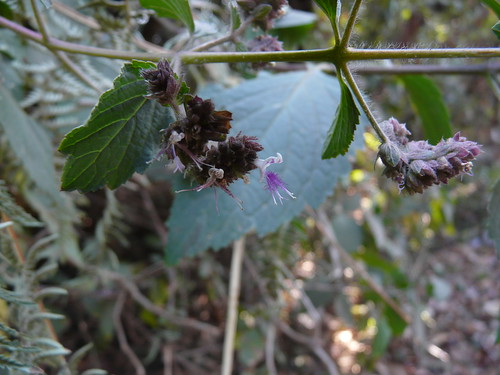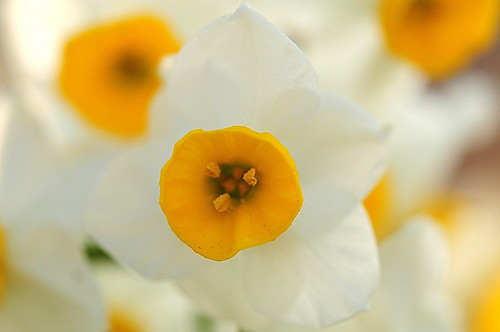While patchouli (Pogostemon cablin) is strongly associated with the hippie movement in modern Western cultures, this fragrant plant was used for centuries in Asia, where it originates, for many uses, including incense, medicine and even as a "functional fragrance" for its potent insect repellent properties. It's also called Patchouly, Pachouli, Ellai (in Tamil), Xuloti (in Assamese) or Puchaput (Hindi). The origin of these names is the Hindi words "Patch" (green) and Illai ("leaf").
In modern perfumery, it is one of those rare and few natural raw materials that cannot be reproduced in the lab (or at least not cost-effectively). So when you detect patchouli's distinct scent in a perfume, you can at least tell that this one component came from a natural source.
Patchouli is native to tropical Asia and is cultivated in similar climates (i.e.: India, Indonesia, Malaysia, Thailand, the Phillipines, and even in West Africa). The best quality of patchouli, however, comes from Indonesia and India.
Patchouli is a very special and distinct note. It would be difficult to describe it to someone who've never smelled it; and once you have experienced patchouli, you are very unlikely to forget it!
Although it is extracted from the leaves of a plant from the mint family (the flowers, by the way, are also extremely fragrant, and has a beautiful purple colour), patchouli does not smell leafy or vegetale in the least. I remember the very first encounter I had with patchouli: I was about 7 or 8 years old, and was visiting one of my 2 BFF. We were talking like little ladies about clear nail polish, and than the conversation turned to perfume. She bragged how the only perfume her mom would ever consider wearing is "Patchouli". What a funny name, I thought to myself. And the next moment, she pulled out a little vial of patchouli oil from the shelf, opened it and let me take a whiff. Pungent, spicy, warm and utterly strange and unlike anything else in the world - that's all I could make of it. If this is the best perfume, surely the rest would be unbearable... Some years later, I would recognize the scent as something the permeated the air around many of my parents' hippie friend, who probably laundered their clothes in it. Anything from East Indian wool shawls to cotton clothes used as baby diapers seemed to have that scent, which I just thought of as most grown-ups' body odour. And to be fair, when it is used mildly, it is very pleasant, musky and inoffensive. It wasn't until I was a teenager and had a "grown up" friend (probably in her early 20's) that she talked about patchouli again. She was a sweet gal, but she definitely wore too much of the stuff (and smoked plenty of weed to boot) that it was easily associated with that mysterious little vial I smelled in elementary school...
So there you have it - my experience with patchouli is probably the classic hippie-association, and it took me years and years to truly like it again, and appreciate it as a raw material that would stand out (which didn't happen until stumbling upon several varieties of high quality patchouli oils, absolutes and CO2 extractions, which subsequently lead to launching Film Noir in 2006. At the end of 2006, I wrote in my summary of that year: "Breaking out of the box and the hippie cliché was a challenge, and I am now smelling patchouli afresh, from a completely different point of view. The sources for raw materials are what makes all the difference here. A patchouli that was carefully harvested, dried, matured and distilled is completely different from the patchouli found in so many aromatherapy and health food stores. It really makes all the difference, just like in wine – if this comparison is of any help. I think Film Noir really proves that patchouli is a luxurious and magical note that has a lot more to it than masking the fumes of marijuana"…
And to further emphasize: You must find a very good quality of patchouli to truly appreciate it as a perfume material that stands on its own. And this could take time - because many patchouli oils are sold on the market when they are "too young" and still have that "off note". It requires patience to wait for the oil to mature to its fullest potential. I have been fortunate enough to sample several incredible patchouli essences, including some aged and even vintage ones which I'm excited to share their olfactory profile here.
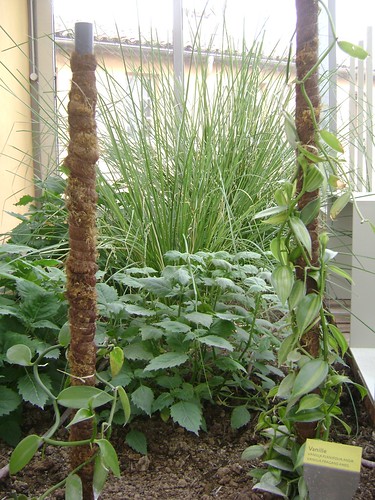
Patchouli plant, next to a vanilla orchid vine and a vetiver grass.
Although patchouli is botanically speaking extracted from the leafy part of the plant, the scent belongs to the woody category. It is complex and hard to understand. That is because the leaves have to be bruised, dried and slightly fermented or aged (either in crushed form, or by layering the leaves and allowing them to partly ferment) for several months or as long as several years to produce the fine characteristic aroma. Even after that process, the oil should be further aerated and aged to eliminate unpleasant off-notes that are fatty, rancid and pungent smelling; and to produce the fine, round, warm desired aroma. Unlike other woody notes (sandalwood, cedarwood, vetiver), Patchouli is more often used in perfumery for feminine scents - floral bouquets, Orientals and Chypre.
Dark Patchouli:
Traditionally distilled patchouli is processed in iron vessels, and produces the so-called "dark" patchouli oils. The iron affects both the colour (darker reddish brown) and the aroma (sweeter and slightly blood-like). This patchouli oil is earthy, musty, spicy (a little like cloves or even cinnamon), warm, dirty, dry, reminiscent of a wine cellar, and wine, woody, earthy, rich, smooth.
Iron-Free Patchouli:
The iron-free patchouli is distilled in stainless-steel produces a lighter oil, still with a very characteristic patchouli scent, yet is clearer, cleaner, lighter and woodier than patchouli oils that contain iron, and less earthy. The lack of iron oxidation also accounts for its lighter colour, which could be more desirable than the dark brown-red hues of patchouli oils that were affected by the iron in the distillation process. Iron free patchouli is often what would be processed in the USA or Europe. It's olfactory profile is earthy, musty and reminiscent of the scent of a cool cave; yet dry and with a soft presence of patchouli’s typical pungent spiciness and a precious wood dry out. Deep and tenacious, iron free patchouli is also very long lasting. The iron-free patchouli smells cleaner, drier, woodier and lighter than the "Dark Patchouli" (which is usually traditionally distilled in the country of origin).
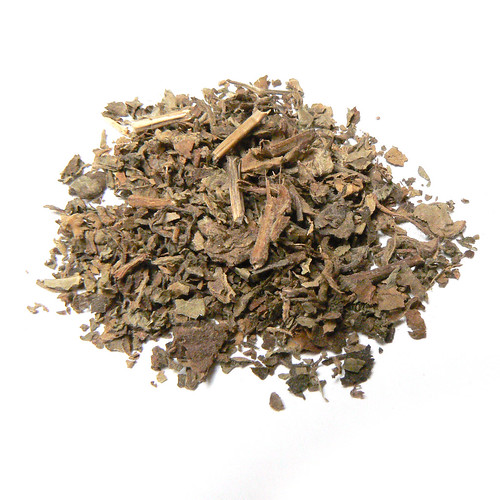
Dried and crumbled patchouli leaves.
In perfumery, patchouli is especially useful for balancing florals, where it creates amazing effects with oils such as rose (creating a foundation on which the rose keeps blooming and unfolding), and also balancing their sweetness and creating more depth and complexity. Feminine scents will contain more patchouli than vetiver (the latter being considered more "masculine" in Western perfumery). Patchouli always has the danger of coming very strong in the formulation. To balance that, it is often mixed with other woody oils (sandalwood, cedar, vetiver, etc.).
Furthermore, Patchouli is a base (Poucher rates it with 100 - which is the highest rank for the lowest evaporating oils). It will stay on paper or fabric for many months if not years. Patchouli also has extremely powerful fixative properties - extending and lengthening the life of more volatile oils such as citrus and florals.
Principal constituents of patchouli night include up to 80% unscented matter (can you even imagine patchouli being "concentrated" more than it already is?) - although these are likely important for its phenomenal lasting power and fixative qualities. Patchouli includes some unique molecules, most of which cannot be reproduced in a lab - such as Patchoulene, Patchoulol (patchouli alcohol), pogostol, bulnesol, patchoulenol, bulnese, and has Germacrene beta, which has strong insecticidal properties which makes patchouli so effective in repelling moth and other insects.
I also have 2 specimens of unique CO2 extractions of patchouli (which are rather rare to come by). Both are Light brown semi-viscous liquids, but they are quite different in their odour profile:
1st CO2 Sample:The CO2 process yields a very unique Patchouli oil that is fresh and lively. The aroma is not as earthy as distilled Patchouli and is more like the fresh plant material. Patchouli CO2 also has an aroma similar to Patchouli Absolute.
2nd CO2 Sample
This patchouli CO2 smells realistically like cured tobacco leaves, fresh cigarettes and cigars. It has some of the known characteristics of patchouli – dry, woody, earthy, but is most of all reminiscent of dry tobacco and patchouli leaves. It also has slight ripe-berry and henna-leaf undertones.
I'm also particularly fortunate to have 2 other aged patchouli, one traditional distillation that could date as far back as a hundred years, and is as dark as India ink and another that was distilled in France and is much lighter colour.
Aged Patchouli
Distilled in the West in stainless steel, leaving out the heavier, more pungent characteristics, and being refined by 3 years of aging, this patchouli has the finest, most delicate aroma ever. Even patchouli haters would enjoy its refined musky-woody character!
Vintage Patchouli
Given to me by a friend, this treasure is of the darkest colour of patchouli oil I've ever seen. It is an opaque Indian ink colour! This antique patchouli has much more of the clovely-camphoreous personality, still remaining pungent, yet very smooth and round like a well-aged wine. Think a big, deep, spicy red wine like shiraz, zinfandel and cabarnet.
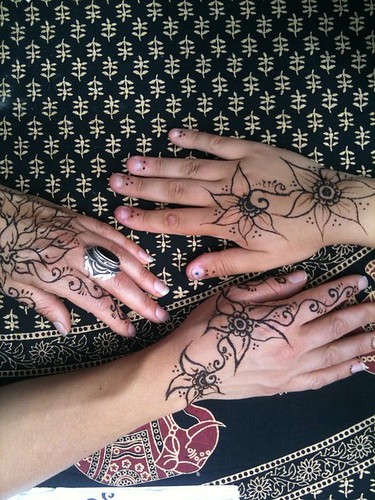
Patchouli Absolute:
Rare to find, and with a very strange, almost offensive character. Think mud, wet mehendi, dry ink, and the like. It's almost unrecognizable as patchouli; though it's definitely musty. The look is even more opaque than the antique patchouli I have. Difficult to think of uses for it, as it's very difficult to work with. It would go well with tobacco and with animalic compositions, and to impart a more avant-guarde feel to a quirky perfume.
Traditional Uses:
Patchouli's original use in tropical Asia was as an hebral remedy (see below). But perhaps its most valuable and widespread use was to scent clothing and fabrics, due to its very effective moth and insect repellent properties. Patchouli's most traditional uses are in sachets that were placed in linen and silk closets and to scent wool paisley shawls and silk scarves. In the Victorian era, it was the scent of patchouli that was the mark of an authentic imported Indian scarves their mark of approval, and introduced the bizarre scent of patchouli to Europe. Small saches were placed in the large sleeves of Geisha's kimonos in Japan for that purpose, and often mixed with other dried woods, spices and resin (most commonly: cassia, borneol camphor, vetiver, sandalwood and agarwood) to create a personalized scent for each Geisha. Likewise, body incense powders (used for purifying the hands before prayers), and joss sticks in both China, Japan and India contain pulverized patchouli leaves, which add to their delicate woodsy scent.
Medicinal Properties:
In the East, patchouli was used as an antidote for poisonous snake bites. It was also believed to help stop the spread of infections, and the herb was used to treat colds, headaches, nausea, vomiting, diarrhoea, abdonimal pain and halitosis.
Aromatherapy Uses:
Antidepressant, Anti-Inflammatory, Anti-Microbial, Antiseptic, Hair Care, Skin Care, Controls appetite, assists in skin conditions (such as Dermatitis, Dandruff, Eczema, Impetigo, Fungal Infections, Athlete’s Foot, and more).
Safety Considerations: Non-toxic, non-irritant, non-sensitizing
Uses in Flavour:
If you've already experienced patchouli, you probably won't be surprised that it has very limited use in flavour. Interestingly enough, although in small dosage patchouli is an aphorodisiac and will increase appetite. But in larger quantities, patchouli has the opposite effect and will suppress appetite. Besides, who want to eat something that is described as "earthy" or "musty"?!
With that being said, patchouli's traditional uses in the East is as a breath freshener. And this use has been adopting in flavour product dating to 19th Century, when "Breath Perfumes" were in vogue. It was blended with licorice among other flavours in the Sen-Sen pastille/breath freshener. It's also possibly present in another similar expectorant lozenges Vigroids, which are often used to soothe the throat by singers.
Uses in perfumery:Patchouli CO2, like most patchouli oils, is a tenacious, long lasting and powerful base note that acts as a fixative and transforms all other notes while adding a dry, tobacco-leaf and precious wood character and deepens the other notes. This particular distillation lends itself best to the tobacco and leather categories, where it will add a realistic cured tobacco note – especially when used in a relatively high ratio. In lower concentration, it will also benefit dry woody perfumes and work well in masculine citrus cologne type fragrances and toiletries.
Patchouli can work with anything, and in any fragrance category - but it blends particularly well with: Tobacco absolute, Sandalwood, Myrrh, Vetiver, Spikenard, Bulgarian Rose Otto, Turkish Rose Absolute, Rose Maroc, Jasmine Grandiflorum, Ylang Ylang, Amber, Labdanum, Immortelle oil and absolute, Geranium oil and absolute, Opoponax, Clary Sage, Lavender, Cedarwood.
Patchouli is dominant in the following perfumes:
It's the main note, almost to the point of being considered a "soliflore" in fragrances such as Reminiscence, Prada, Borneo 1834, Coromandel, Angel, Film Noir, and Patchouli being the namesake of several niche fragrances by Lorenzo Villoresi, Mazzolari and Jalaine; Patchouli Antique by Les Nereides and Patchoulissime by Keiko Mecheri, Patchouli Imperiale by Dior, White Patchouli by Tom Ford are other examples of single note patchouli.
As a significant and influential component, but by no means the central theme, patchouli appears in big spicy orientals such as Tabu, Youth Dew, Opium and George Sand; iconic animalic-floral Chypres such as Miss Dior, Ma Griffe, Aromatics Elixir and many more, and in floral bouquets such as Voleur de Roses (l'Artisan Parfumeur) and Tuberose by Scent Systems; and most orientals (including the ambery ones) will include at least a touch of patchouli for added depth - i.e.: Shalimar, Obsession, Anné Pliska; and in more recent releases - adding a dry/mineral note to fresh scents such as Pure Turquouise, where the sulfury grapefruit brings out the best of its mineral personality (perhaps the iron from the still comes out stronger this way?); and - sadly, in the faux-chypre genre of "Fruitchoulis" (oftentimes with a sickening aquatic twist) lead in part by Black Orchid (Tom Ford), Coco Mademoiselle and the like. Chinatown and 31 Rue Cambon also rely on patchouli more than oakmoss to bring across a dry, sophisticated Chypre persona (though non of the true characteristics of the genre), alongside vetiver to create the new "Pink Chypre" category. Last but not least, patchouli's role in masculine fragrances cannot be underestimated: even though on its own it's considered more feminine, it is used in countless oriental, leathery, woody and fougere fragrances for men (Basenotes' database shows over 700 fragrances for men featuring patchouli); including classics such as the iconic Eau Sauvage (Dior), Azzaro for men, Habit Rouge, Mouchoir pour Monsieur, Heritage (Guerlain) Chanel Pour Monsieur, Equipage and Bel Ami (Hermes), A*Men (Thierry Mugler) and it's many flankers, Obsession for men (Calvin Kelin), ArbitRary and l'Herbe Rouge (Ayala Moriel), to name only very few.
Patchouli's versatility is really quite astonishing - especially for a note that is considered an "accessory note" - i.e.: one that is rarely added without changing the composition completely. It has a profound effect wherever you put it - in small or large quantities. It can feel dirty, clean, animalic, refined, bohemian or sophisticated, luxuriously rich and exuberant - or melancholy and sparse in a manner that will fit perfectly well in a monastery. These qualities together with a relative affordability give patchouli a timeless charm.
